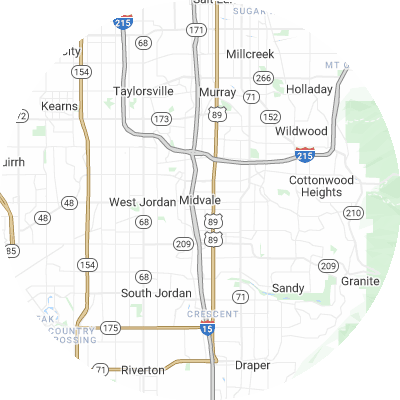Signs You May Need Gutter Guards
Gutter guards aren’t always needed, but symptoms of blocked and overflowing gutters are clear. Signals of chronic gutter issues include:
- Soggy ground or visible erosion patterns around your foundation
- Visibly damaged, sagging, or misaligned gutters that no longer direct rainwater correctly
- Leaky joints or seams where water leaks from the gutters
- Frequent clogs that lead to overflow and water spilling over gutters
- Mold growth, interior wall stains, or peeling exterior paint on walls near gutters.
How To Choose a Gutter Guard Installer
Assess Their Experience
The right installation company will have ample experience, including multiple years in business and experience with several brands and models. Companies with experience can properly measure and install gutter guards to meet your distinct needs. Inquire about how long a company has been doing installations and request referrals from local customers.
Verify Proper Licensing and Insurance
Check that the businesses you're considering have valid licensing, bonds, workers compensation coverage, and general liability insurance. This safeguards you in case of injuries or accidents that could arise. Ask potential providers for current licensing and insurance papers.
Choose Reputable Brands
Look for companies that offer leading gutter guard brands like LeafFilter and Gutter Helmet. Avoid companies that only install generic no-name guards or their own off-brands, which may not have gone through the same level of rigorous testing.
Seek Custom Fit Services
For superior performance, gutter guards need on-site sizing and cutting to match your gutters. Select a company that takes custom measurements and trims guards for your house instead of using generic options. Well-fitted guards avoid debris-trapping gaps.
Examine Warranties
Top gutter guard installers often offer 20-year or lifetime warranties covering leaks, rust, clogs, and other issues. When picking a company, carefully examine the warranty details for both materials and workmanship guarantees. Warranties provide the best protection for your gutter investment.
Check Reviews and Referrals
You should check online reviews on sites such as Google Reviews, the Better Business Bureau (BBB), or Yelp to read about customer experiences. You can also ask neighbors for recommendations on quality local gutter guard companies. When researching providers, we'd recommend going for companies with a history of good reviews instead of just a single review.
Types of Gutter Guards
There are six primary gutter guard types. These include the following:
- Brush guards are made of large brush bristles that partially obstruct your gutters, blocking debris and allowing water to pass through. Brush guards cost around $4.03 per linear foot.
- Foam guards are lightweight and easy to install. This type of guard catches debris on the foam and keeps it out of your gutter. On average, you can expect to spend $2.45 per linear foot for foam guards.
- Screen guards have large holes that allow water to pass through while keeping out debris. On average, you can expect to pay $4.08 per linear foot for screen guards.
- Mesh guards stop debris but allow water to flow through. Mesh guards have even smaller holes than screen guards. They're durable and encourage debris to slide off as opposed to sitting on top of the gutters. Mesh guards cost roughly $3.89 per linear foot.
- Micro-mesh guards are typically the most effective. Micro-mesh guards have smaller holes than regular mesh guards and let even less debris through. On average, you can expect to spend $4.99 per linear foot for micro-mesh guards.
- Surface tension guards, also called reverse curve guards, use surface tension to allow water to flow into your gutters while debris slides off. Normally, they can be seen from the ground. On average, you can expect to pay $3.01 per linear foot for surface tension guards.














